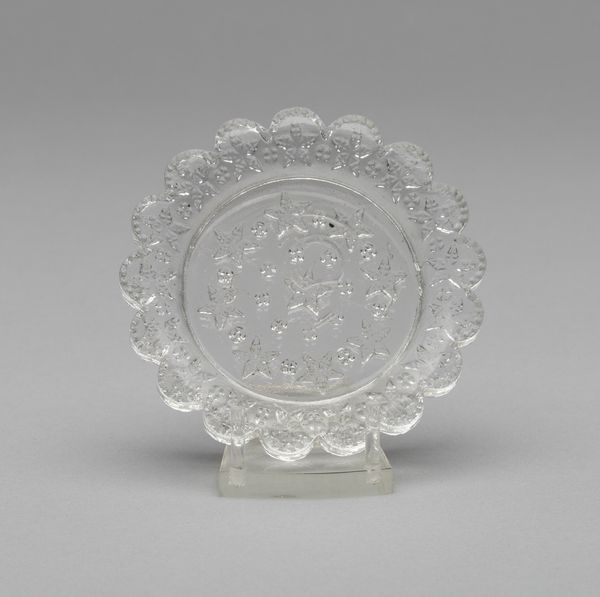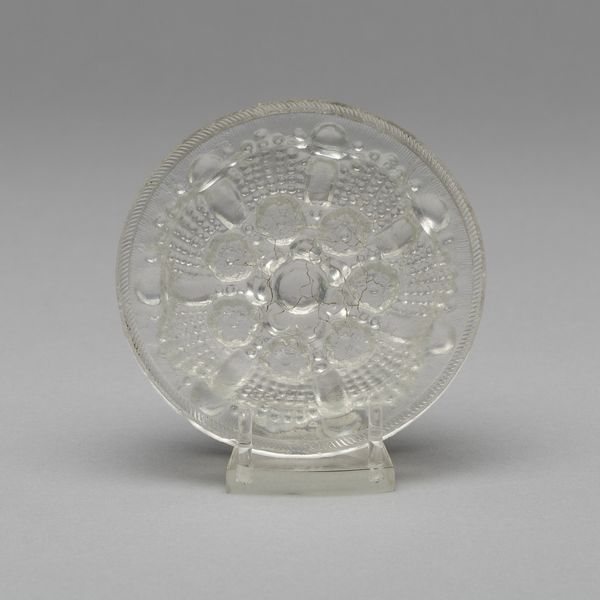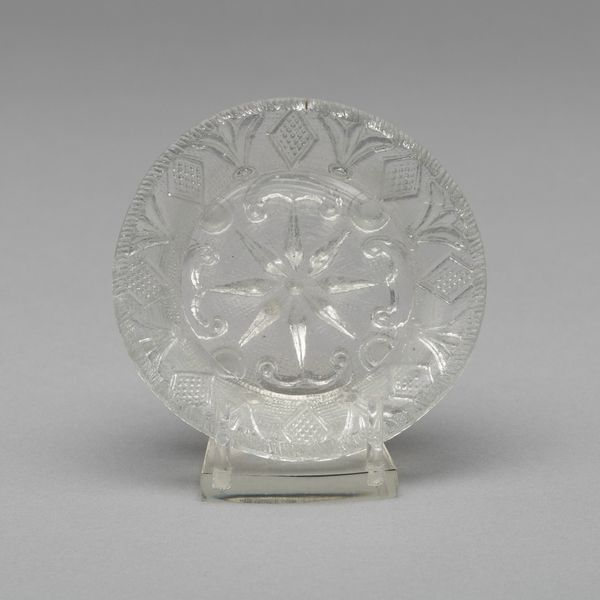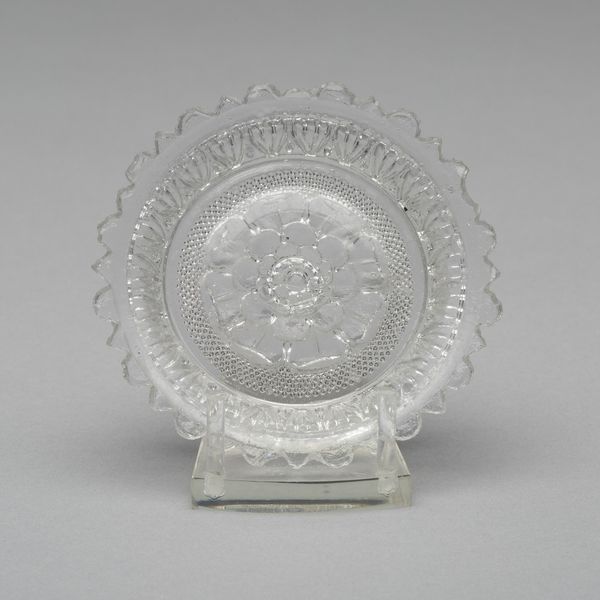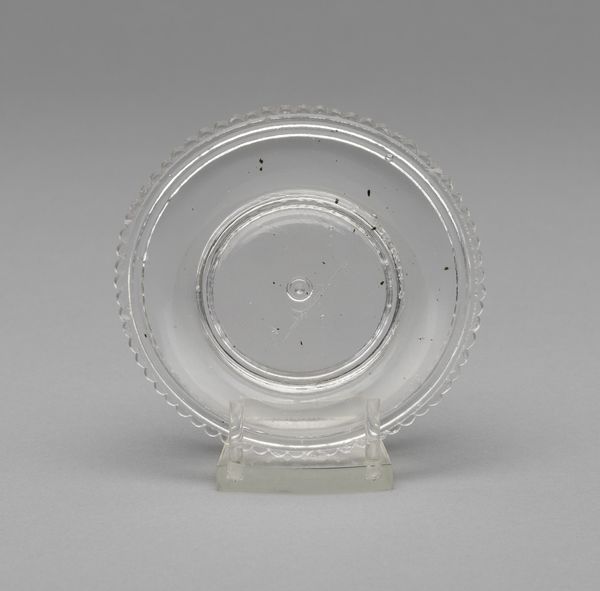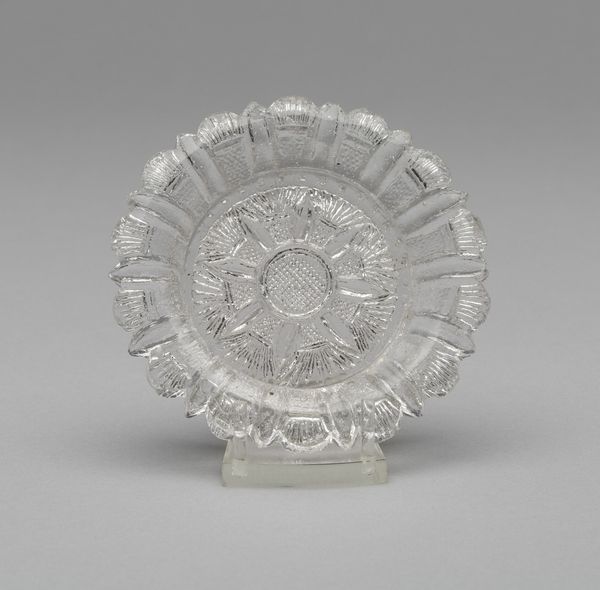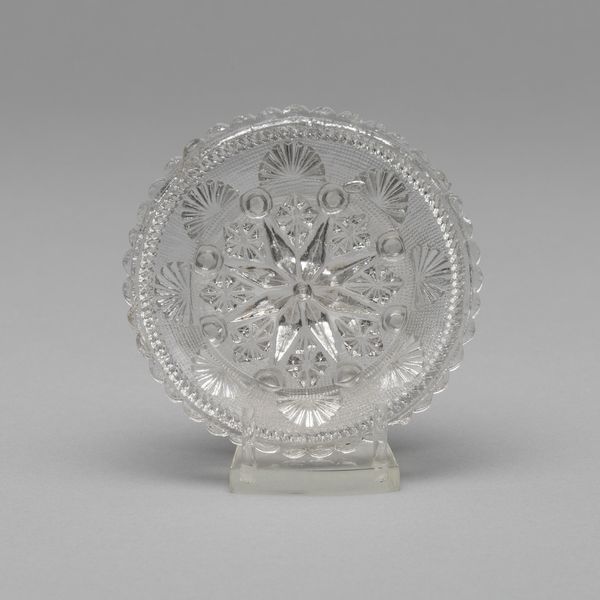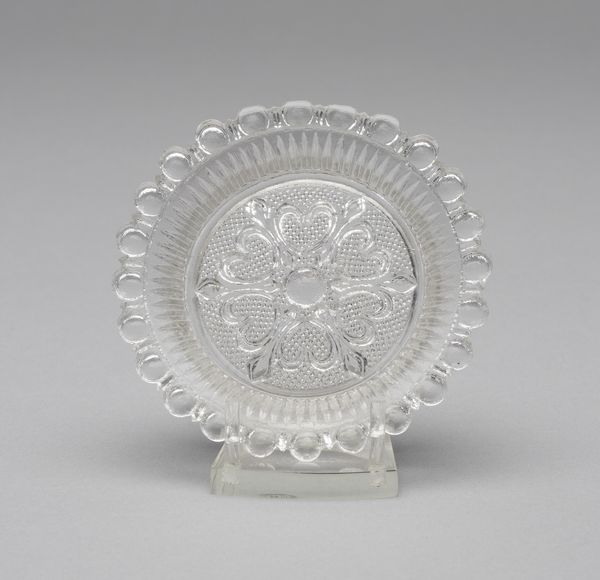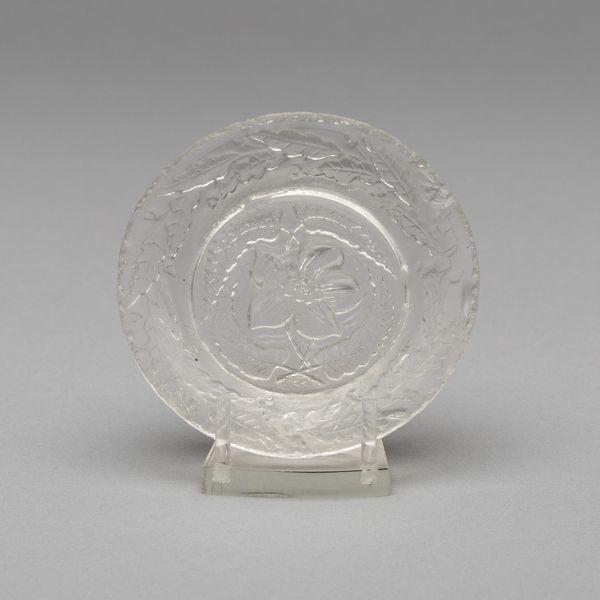
ceramic, glass
#
ceramic
#
glass
#
decorative-art
Dimensions: diam. 7.6 cm (3 in.)
Copyright: Public Domain
Curator: The item we're looking at now is a glass cup plate, created anonymously sometime between 1830 and 1835. Editor: It's strikingly simple, almost austere. The clear glass and the repetitive geometric patterns give it a very functional, practical feel. Curator: Exactly! Cup plates became popular because tea and coffee were served in handle-less cups during that period. People would pour a bit of their drink into the saucer to cool, and then use these little plates to set the cup on to avoid staining furniture. It’s fascinating how a specific social practice created a need for this new, very humble material object. Editor: And that speaks to a broader shift, doesn't it? The democratization of nicer tableware with industrial production. Glassmaking technology made it more accessible, creating wider consumer markets. Who would have been buying these? Curator: Well, probably the emerging middle class. Something relatively inexpensive that would communicate a sense of gentility. But let’s look closer at how it was made: the pressed glass, the repeated mold patterns. These speak to industrial processes transforming decorative arts. Editor: It’s so unassuming now, though. Today we might almost overlook its significance within social and material history. So interesting to think about this tiny object holding so much meaning about everyday life. Curator: Absolutely, it reminds us that art history is also the history of functional items, industrial processes, and social behavior. Editor: A humble piece, beautifully made, reflective of larger social and material realities.
Comments
No comments
Be the first to comment and join the conversation on the ultimate creative platform.
